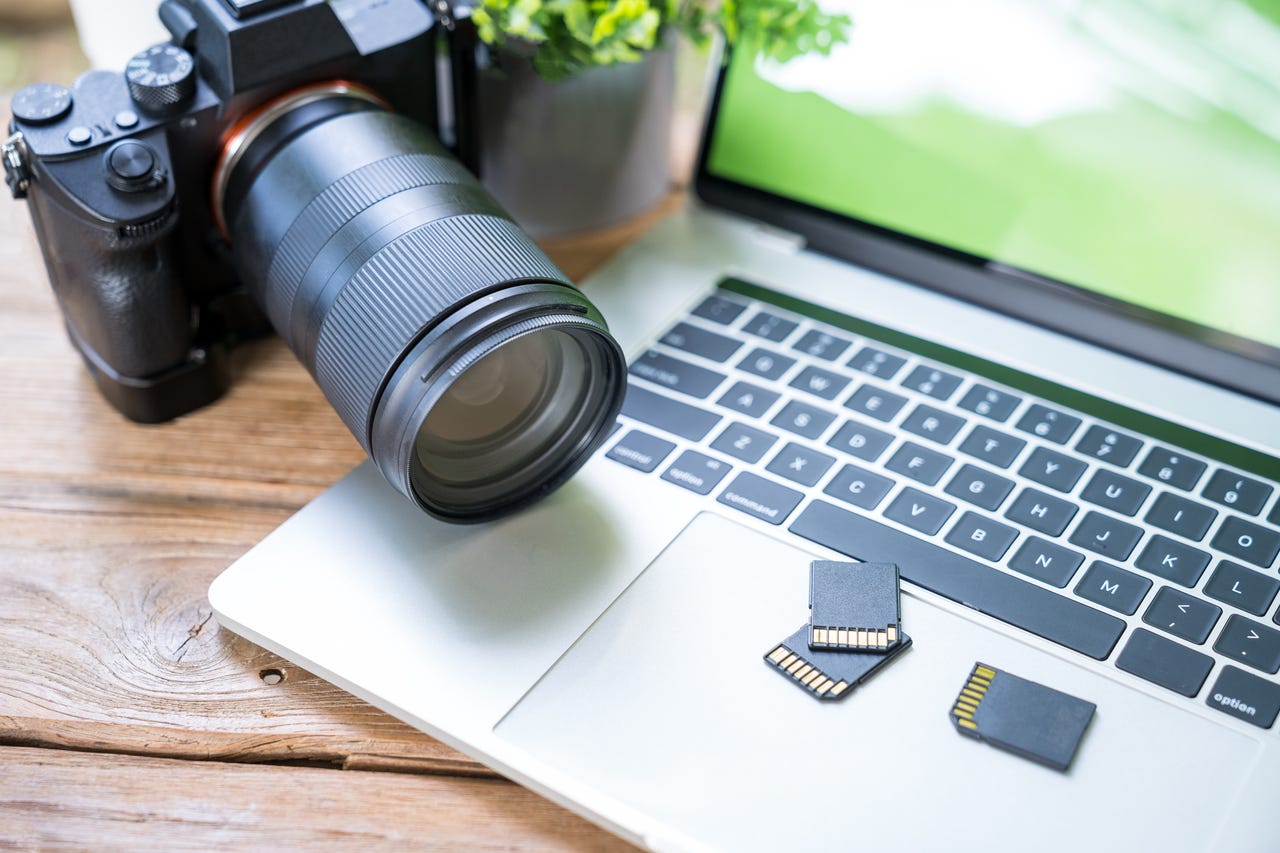
































SD cards are the storage media of choice for photographers.
Virojt Changyencham/Getty ImagesUsually,when someone comes to me after losing their data,my first question is, "Do you have a backup?" I know it sounds rather callous because many people won't have one, but sometimes people do, andit's a quick and easy -- and, for me, low-effort -- way to save the day.
But sometimes a backup won't help. Take this example from a local photographer who had been shooting away, and all of a sudden the camera started to play up, and some photos were lost.
Also: What do all those microSD and SD card numbers and letters mean?
You know, the irreplaceable kind. The worst kind of photos to lose.
And there's no opportunity to make a backup, since it happened at the point it was taken.
Having shot literally hundreds of thousands of shots -- shooting timelapse is incredibly hard on a camera -- I consider myself a bit of an expert on this kind of data loss. It's rare, but the more you press that shutter button, the more likely it is that it'll happen to you.
Also: The best cameras for photographers
Note that I've talking here about SD cards, but this works for microSD cards and USB flash drives too. It works for lost video too, but the success rate for recovering video.
OK, first off, don't panic. If your camera has a light to show that it's saving data to the card, wait for that to stop flashing and then shut down the camera and remove the card (if the light doesn't stop flashing, give it a minute, then shut it down).
There is a lot of recovery software out there -- some of it expensive, some of it very expensive, and some free. My tool of choice here is a free, open-source tool called PhotoRec by CGSecurity. This utility is available for a wide range of operating systems, from the usual Windows, MacOS, and Linux, to flavors for Synology and QNAP, and even MS-DOS (remember MS-DOS? I barely remember that).
Also: The best cameras for beginners
While I'm a big fan of MacOS and Linux, if you're a beginner or someone put off by using terminals and typing commands into the command line, I recommend using the Windows version. Why? Because this has a graphical interface that makes it a lot easier to use for many.
PhotoRec running on Windows 11.
Adrian Kingsley-Hughes/PhotoRec running on MacOS.
Adrian Kingsley-Hughes/To recover the data, pop in the card, fire up the software, select the media to scan and where to save it, then let it do its thing.
Also: You might be using the wrong microSD cards
How long it'll take depends on the size of the media, and it can range from under a minute to many minutes. Be patient, let it do its thing, and then you can look through what's been recovered.
I've had amazing success with this tool. And in my experience, if PhotoRec can't recover the data you've lost, nothing short of sending the media off for professional recovery will.
Good question! While you can't do anything to prevent your camera from deciding to quit on you, here are the steps I take to minimize the possibility that I'm let down by my SD cards.
So why did the card fail?
The honest answer is, I'm not sure. After recovering the data, I gave it back to the owner. I did notice a few things.
Also: Store your SD cards in this case to avoid losing or damaging them
First, it was quite an old 16 GB SD card. I assume it had experienced a fair bit of wear over the years. Not only was it old, but it was also a rather slow card, especially for the camera it was being run in. It's possible the hiccup was down to it not being able to keep up with the camera.
Finally -- and this is not confirmed -- the card could have been counterfeit. I'm quite familiar with the brand in question, and to me, the printing on the label seemed off. This might have been down to the card being handled a lot, but it made me suspicious for sure.
 Etiquetas calientes:
computación
Almacenamiento de almacenamiento
Etiquetas calientes:
computación
Almacenamiento de almacenamiento